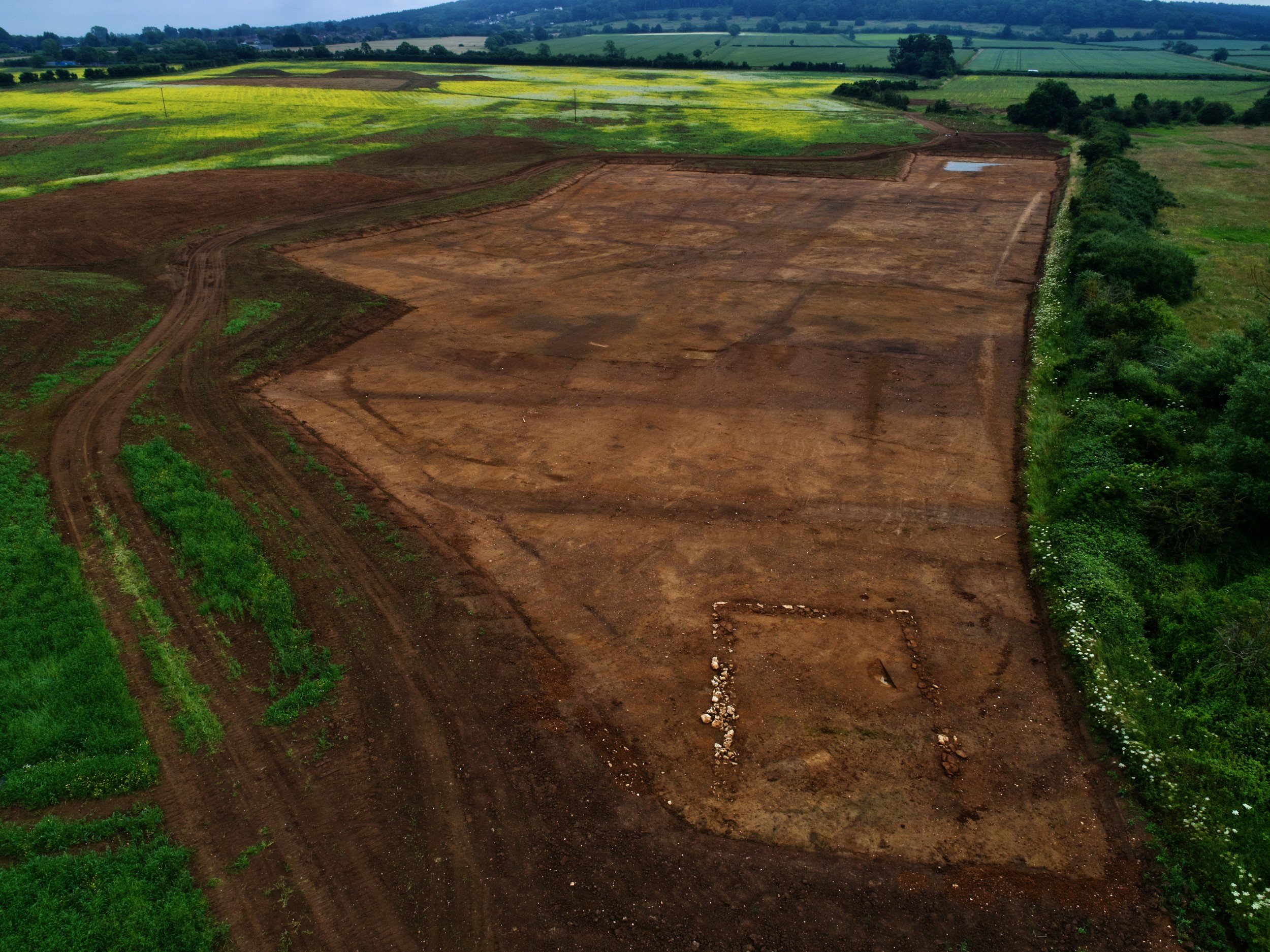South Caldecotte, Milton Keynes
In 2021, Albion Archaeology carried out excavations at South Caldecotte, near Bow Brickhill, Milton Keynes.
Aerial photograph of Area 4 from east (stone building and road in foreground).
Various excavations over a c. 48ha development site uncovered settlement and funerary activity peripheral to the Roman small town of Magiovinium. Area 1 adjacent to the A5 roundabout revealed the continuation of 1st–2nd-century land allotments recorded by David Neal during construction of the modern A5 (1), and a small square shrine associated with a mixed inhumation and cremation cemetery. Area 2 targeted an isolated small square barrow with a central mound and cremation, also 1st–2nd-century in date. On the brow of a shallow incline to the north, Area 3 revealed an enclosure and roundhouses dated to the late Iron Age/early Roman transitional period, the limited artefact assemblage suggesting a relatively short period of occupation.
Areas 4 and 5 revealed c. 1.5ha of enclosed Romano-British settlement adjacent to a spur of Watling Street, heading north from Magiovinium. The road, represented within the excavation by parallel ditches, was also identified to the south by Neal (1) but in more substantial form, with a metalled surface. The main enclosures were established east of the road; some contained evidence of habitation while others appeared to enclose funerary activity. The artefactual assemblage suggests that the enclosures were primarily occupied from the 1st to 3rd centuries. A deep inhumation burial contained a large, poorly preserved iron object tentatively suggested to be the linchpin from a cart or chariot wheel. A least one large rectangular timber building was identified, as well as a small roundhouse gully. West of the road and separate from the main settlement activity, the stone foundations of a rectangular building were excavated, formed of locally sourced limestone and sandstone. Its function is unclear, but a number of cremation burials were identified in its vicinity.
Wooden scutching knife, Roman. Illustration by S. Allen.
A wooden object found in a deep pit is believed to be a scutching knife (2), used in the production of linen from flax. No Romano-British parallels have been published; examples are known from the continent but from no earlier than the 9th century. The amount of Roman pottery recovered from the same pit makes it unlikely to be residual and if the object is of the same date, then it is one of the earliest examples to have survived.
1. D.S. Neal, ‘Excavations at Magiovinium, Buckinghamshire, 1978-80’, Records of Buckinghamshire 29 (1987).
2. S.J. Allen, A wooden artefact from Fenny Stratford, Buckinghamshire, York Archaeology Conservation Laboratory Report No. 2022/02 (2022).
Summary by David Ingham


